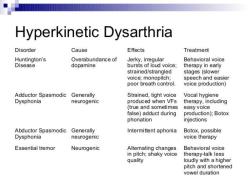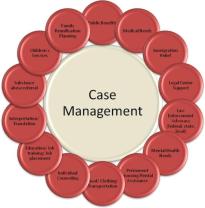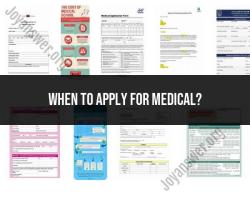What are the signs and symptoms of dysarthria?
Dysarthria is a motor speech disorder that can result from damage to the muscles or nerves involved in speech production. The condition can affect the clarity, strength, and coordination of the muscles used for speech. Here are common signs and symptoms of dysarthria:
Articulation Difficulties:
- Slurred or imprecise speech
- Difficulty forming words clearly
- Inability to move the tongue, lips, or jaw effectively for speech
Problems with Speech Rate:
- Speaking too fast or too slow
- Irregular speech rhythm
Volume Control Issues:
- Speaking too softly or too loudly
- Difficulty controlling the volume of speech
Changes in Pitch:
- Abnormal pitch variations in the voice
- Monotone or excessively high/low pitch
Breathing Difficulties:
- Shortness of breath during speech
- Irregular breathing patterns
Nasal Speech:
- Speech sounds overly nasal
- Difficulty controlling airflow through the nose and mouth
Changes in Resonance:
- Altered resonance, making speech sound muffled or unclear
Weak Facial Muscles:
- Facial muscles may appear weak or flaccid
- Difficulty controlling facial expressions
Difficulty with Tongue Movements:
- Impaired tongue movements affecting speech sounds
- Slowed or uncoordinated tongue movements
Chewing and Swallowing Issues:
- Difficulty chewing or swallowing
- Frequent choking or coughing while eating or drinking
Fatigue:
- Speech difficulties may worsen with fatigue or extended periods of talking
Emotional Impact:
- Frustration or emotional distress related to difficulty communicating
It's important to note that dysarthria can result from various underlying conditions, such as neurological disorders, brain injuries, or diseases affecting the muscles involved in speech. The severity and specific characteristics of dysarthria can vary widely based on the cause and the extent of the impairment.
If someone is experiencing persistent difficulties with speech and shows signs of dysarthria, it is crucial to seek medical attention. A thorough evaluation by a speech-language pathologist, neurologist, or other healthcare professionals can help determine the underlying cause and guide appropriate management and treatment options.
What are the common indicators and symptoms of dysarthria?
Dysarthria is a speech disorder characterized by difficulty controlling the muscles used for speech. It can cause problems with speech clarity, volume, rhythm, and intonation. Here are some common indicators and symptoms of dysarthria:
Speech problems:
- Slurred speech: This is the most common symptom of dysarthria and can make it difficult to understand what you are saying.
- Slow or rapid speech: Some people with dysarthria find it difficult to speak at a normal pace, either speaking very slowly or very quickly.
- Uneven speech rhythm: This means that the speech may sound jerky or choppy.
- Difficulty pronouncing sounds: Some people with dysarthria have difficulty forming certain sounds, which can make their speech sound garbled or unclear.
- Monotone speech: This means that the speech lacks variation in pitch, which can make it sound flat and unemotional.
Voice problems:
- Nasal voice: This means that the voice sounds like it is coming from the nose, rather than the mouth.
- Breathy voice: This means that the voice sounds weak and airy.
- Strained voice: This means that the voice sounds tight and tense.
- Hoarse voice: This means that the voice sounds rough and raspy.
- Difficulty controlling volume: Some people with dysarthria find it difficult to control the volume of their voice, speaking either too loudly or too softly.
Other possible symptoms:
- Drooling: This can occur because of difficulty controlling the muscles of the mouth and tongue.
- Facial weakness: This can make it difficult to smile, frown, or move the lips.
- Difficulty swallowing: This can be a problem for people with dysarthria who have difficulty controlling the muscles of the throat.
It's important to note that the severity of symptoms can vary greatly from person to person. Some people may only have mild speech problems, while others may have difficulty speaking at all.
Here are some resources where you can find more information about dysarthria:
- American Speech-Language-Hearing Association (ASHA): https://www.asha.org/practice-portal/clinical-topics/dysarthria-in-adults/
- Mayo Clinic: https://www.mayoclinichealthsystem.org/hometown-health/speaking-of-health/help-is-available-for-speech-and-language-disorders
- National Institute on Deafness and Other Communication Disorders (NIDCD): https://www.nidcd.nih.gov/glossary/dysarthria
If you are experiencing any of the symptoms of dysarthria, it is important to see a doctor or speech-language pathologist (SLP) to get a diagnosis and discuss treatment options.













